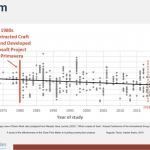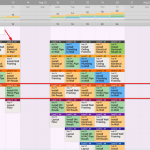By Dr. Anthony Kenneson-Adams, FInstLM., Head of Learning & Knowledge Transfer, Project7 Consultancy
Developing an Adaptable & Flexible Improvement Plan
Today we present the 3rd installment of an 8-step process to enable you on your journey to Operational Excellence. We trust you will put these steps into action and power-up your journey to Operational Excellence.
Develop a plan: Once you have identified areas for improvement in a manufacturing process, you can develop a plan for improvement by following these steps:
- Clearly Define the Objectives: Clearly articulate the goals and objectives of the improvement plan. What specific outcomes do you want to achieve? Make sure the objectives are Specific, Measurable, Attainable, Relevant, and Time-bound (SMART goals).
- Prioritize Improvement Opportunities: Assess the identified areas for improvement and prioritize them based on their potential impact, feasibility, and alignment with the overall organizational strategy. Consider the resources, time, and effort required for each improvement opportunity.
- Break Down the Improvement Plan: Break down the improvement plan into actionable steps or initiatives. Each initiative should have a clear scope, defined activities, and expected outcomes. Assign responsibilities to individuals or teams who will be accountable for executing each initiative.
- Set Timelines and Milestones: Establish realistic timelines for each initiative and define key milestones to track progress. Make sure the timelines are achievable and consider any dependencies or interdependencies among the initiatives.
- Allocate Resources: Determine the resources required to execute the improvement plan successfully. This includes human resources, financial resources, technology, equipment, and any external support or expertise needed. Ensure that the necessary resources are allocated appropriately to support the improvement initiatives.
- Develop Action Plans: For each improvement initiative, develop detailed action plans that outline the specific tasks, activities, and deliverables. Clearly define the steps required to implement the improvement and identify any potential risks or challenges. Assign responsibilities for each task or activity to individuals or teams.
- Implement Continuous Monitoring and Feedback Mechanisms: Establish mechanisms to monitor the progress of the improvement plan and gather feedback. Regularly review the status of each initiative, track key performance indicators (KPIs), and compare the actual results against the desired outcomes. Collect feedback from stakeholders and engage with the teams involved in the improvement initiatives to ensure continuous improvement and timely course correction.
- Communication and Engagement: Develop a communication plan to keep stakeholders informed about the improvement plan and its progress. Engage and involve employees at all levels to ensure their understanding, commitment, and support. Encourage open communication channels to gather insights, suggestions, and feedback from the teams involved.
- Training and Skill Development: Identify any training or skill development needs that may be required for employees involved in executing the improvement initiatives. Provide necessary training or resources to enhance their capabilities and ensure they have the skills and knowledge required to contribute effectively.
- Evaluate and Celebrate Success: Regularly evaluate the impact of the improvement initiatives and celebrate the achieved successes. Recognize and appreciate the efforts of individuals and teams involved. Identify any lessons learned during the improvement process and incorporate them into future improvement initiatives.
Remember that developing an improvement plan is an iterative process. Regularly review and refine the plan based on feedback, results, and changing circumstances. Stay adaptable and flexible in your approach to maximize the effectiveness of your improvement efforts.
If you missed last week’s post you can read it here, and you can find all the posts on our blog page.










